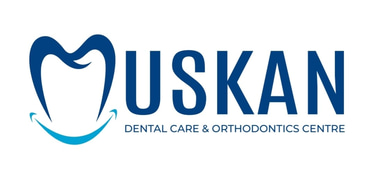Ectodermal Dysplasia: Symptoms, Diagnosis & Dental Treatment Guide
Ectodermal Dysplasia (ED) is a rare genetic disorder that affects the development of tissues derived from the ectoderm layer, including skin, hair, nails, sweat glands, and teeth. Though uncommon, this condition has a significant impact on a child’s oral health and appearance, and early dental intervention is crucial for improving both functionality and self-esteem.
ECTODERMAL DYSPLASIA
NEETU JHUNJHUNWALA
7/10/20251 min read
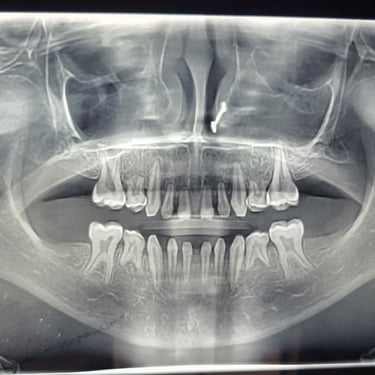
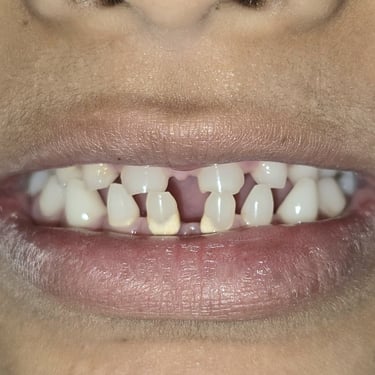
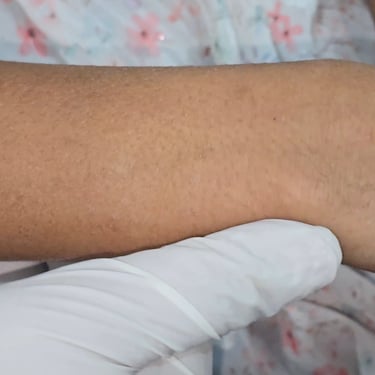
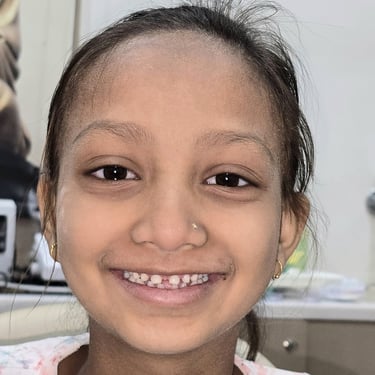
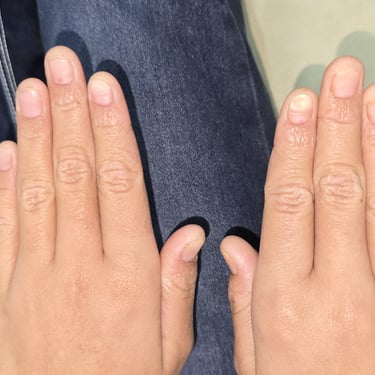

✅ What is Ectodermal Dysplasia?
Ectodermal Dysplasia refers to a group of genetic disorders that affect the outer layer of the embryo (ectoderm). This group includes over 150 different syndromes. The most common type affecting dental health is Hypohidrotic Ectodermal Dysplasia (HED).
🔍 Common Symptoms:
Missing or abnormal teeth (hypodontia/anodontia)
Thin, sparse scalp and body hair
Dry skin and eczema
Inability to sweat (hypohidrosis)
Distinct facial features (prominent forehead, saddle nose)
Brittle nails
🦷 How Ectodermal Dysplasia Affects Teeth
Dental issues are often the first noticeable sign in children. These include:
Missing teeth (partial or complete)
Cone-shaped teeth
Delayed eruption of permanent teeth
Jaw development issues
🧬 What Causes Ectodermal Dysplasia?
Ectodermal Dysplasia is typically caused by mutations in genes like EDA, EDAR, or TP63. These genes affect ectoderm development during embryogenesis. The condition may be X-linked, autosomal dominant, or recessive, depending on the type.
🧪 Diagnosis of Ectodermal Dysplasia
Diagnosis is done through:
Clinical examination (dentition, skin, nails)
Family history
Genetic testing
Biopsy of skin/sweat glands (in rare cases)
Early diagnosis helps guide proper dental rehabilitation and genetic counseling.
👩⚕️ Dental Treatment for Ectodermal Dysplasia
Dentists play a major role in restoring oral function and aesthetics. Treatment options include:
🦷 Pediatric Solutions:
Removable partial dentures (for early age)
Orthodontic space maintainers
👨⚕️ Long-Term Adult Care:
Complete dentures
Implant-supported prostheses (after jaw development)
Veneers or crowns for malformed teeth
🗨️ Case Highlight: In one of our recent ED cases, we fabricated a lightweight, age-appropriate denture for a 7-year-old boy to help him speak and chew properly. The transformation in confidence was remarkable.
(Photos and results with consent shared below.)
📸 Before & After – Real Case from Our Clinic
👪 Supporting Children with ED: Parental Guidance
Encourage regular dental visits
Maintain oral hygiene with soft brushes and fluoride toothpaste
Seek psychological support if child faces bullying or self-esteem issues
Consider early dental prosthesis for speech and nutrition
📌 Frequently Asked Questions
Q. Is Ectodermal Dysplasia curable ?
No, but its symptoms—especially dental—can be managed effectively.
Q. At what age should dental treatment start ?
As early as 3–5 years, depending on cooperation and growth.
Q. Can dental implants be placed ?
Yes, in late teens or adulthood, when jaw growth is complete.
💬 Final Thoughts
Ectodermal Dysplasia, though rare, has a life-changing impact on children. Early dental intervention, cosmetic solutions, and continuous support can empower these kids to smile confidently.
📞 Book a Consultation
If you suspect your child may have signs of Ectodermal Dysplasia, or if you're looking for dental treatment options, reach out to us:
